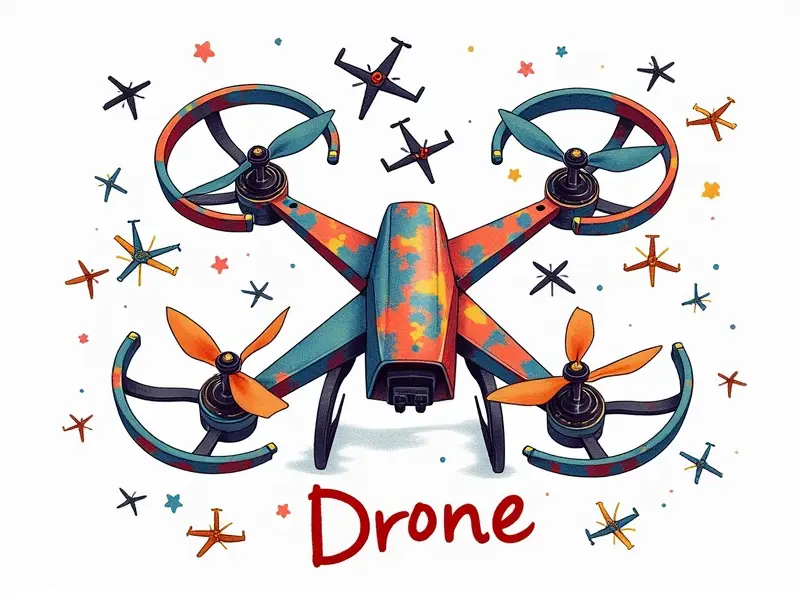Build a long-range drone

Maximize Range with Long-Range Drone Setup
Building a long-range drone requires careful planning and the right components to ensure optimal performance. Start by selecting high-quality FPV (First Person View) equipment that can transmit video signals over extended distances without degradation. Opt for antennas designed specifically for drones, such as directional Yagi or omnidirectional whip antennas, which enhance signal strength and range.
Build a Durable Long-Range FPV Drone
A durable long-range FPV drone is essential for maintaining performance during extended flights. Use lightweight yet robust materials like carbon fiber for the frame to ensure durability without adding excessive weight. High-capacity batteries are crucial, providing the power needed for longer flight times. Additionally, incorporate redundant systems such as backup cameras and antennas to minimize the risk of signal loss.
Craft the Ultimate Long-Range FPV Racing Drone
Creating an ultimate long-range FPV racing drone involves balancing speed with stability and range. Choose powerful motors and efficient propellers that can handle high speeds while maintaining control at extended distances. Opt for a lightweight frame design to maximize agility, and integrate advanced telemetry systems to monitor battery levels, motor temperatures, and other critical data in real-time.
Enhance Signal Strength for Far-Flying Drones
To enhance signal strength for far-flying drones, focus on optimizing the FPV system. Use high-gain directional antennas paired with powerful transmitters to ensure clear video transmission over long distances. Additionally, consider using frequency bands like 1.3 GHz or 5.8 GHz that offer better range and fewer interference issues compared to lower frequencies.
Optimize Antennas for Maximum Drone Range
Antenna optimization is crucial in achieving maximum drone range. Install directional Yagi antennas on both the transmitter and receiver ends to focus signal strength in a specific direction, reducing loss over distance. For omnidirectional coverage, use whip or patch antennas that provide uniform signal distribution across all angles.
Extend Flight Distance with Advanced Tech
To extend flight distance, incorporate advanced technology into your drone setup. Utilize GPS modules for precise navigation and return-to-home functionality, ensuring the drone can autonomously navigate back to its starting point in case of signal loss or battery depletion. Implement telemetry systems that monitor vital parameters like altitude, speed, and orientation, allowing you to maintain optimal performance during long flights.
Tips for Building a High-Performance Long-Range Drone
- Choose the Right Components: Select high-quality motors, propellers, ESCs (Electronic Speed Controllers), and batteries that provide balanced power-to-weight ratios.
- Optimize Weight Distribution: Ensure even weight distribution across the drone to maintain stability during long-range flights.
- Incorporate Redundancy: Add backup systems such as additional cameras, antennas, and batteries to ensure reliability under challenging conditions.
Boost Your Drone's Signal for Longer Flights
To boost your drone’s signal for longer flights, focus on improving the quality of your FPV system. Use high-power transmitters and receivers that can handle extended distances without compromising video clarity. Additionally, implement diversity antennas which switch between multiple antenna types to maintain a strong connection in varying environments.
Components for Building a Long-Range Drone
- Frame: Lightweight yet durable materials such as carbon fiber or high-strength plastic.
- Motors and Propellers: High-torque motors with efficient propeller designs to maximize thrust and control.
- Batteries: High-capacity LiPo batteries that provide sustained power for extended flights.
- Antennas: Directional Yagi or omnidirectional whip antennas for optimal signal strength and range.
Secrets for Building High-Range Drones
The secrets to building high-range drones lie in meticulous planning, quality components, and innovative technology. Utilize advanced telemetry systems to monitor real-time data, ensuring you can make adjustments on the fly to maintain optimal performance. Experiment with different antenna configurations and frequencies to find the best setup for your specific needs.
DIY Guide to Building Long-Range Quadcopters
A DIY guide to building long-range quadcopters involves several key steps:
- Design Your Frame: Create a lightweight, durable frame using materials such as carbon fiber or high-strength plastic.
- Select Components: Choose high-quality motors, propellers, ESCs, and batteries that offer balanced performance for long-range flights.
- Install FPV System: Set up a robust FPV system with powerful transmitters and receivers along with optimized antennas.
- Add Redundancy: Incorporate backup systems like additional cameras, batteries, and telemetry units to ensure reliability.
Conclusion
Building a long-range drone requires careful consideration of components, design, and technology. By focusing on durable materials, high-quality FPV equipment, and advanced tech such as GPS modules and telemetry systems, you can create a reliable and efficient quadcopter capable of extended flights. Follow these guidelines to craft the ultimate long-range FPV racing drone or general-purpose drone for far-flying adventures.

